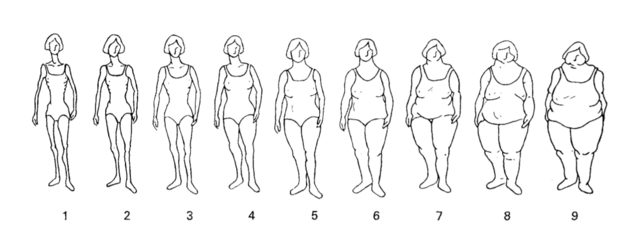Media
Women Think Men Desire Skinny Models. They’re Wrong.
What this means for women who date men.
Posted August 8, 2020 Reviewed by Devon Frye
For decades, researchers and activists have criticized the fashion industry for promoting a narrow, unrealistic, and often unhealthy body ideal for women. In the 1980s, two researchers made a splash with a pair of studies suggesting that men do not want women to be as thin as women think men want them to be. Popular press articles interpreted this finding as evidence that men don’t find skinny fashion models attractive, preferring a curvier body instead.
Over thirty years later, these articles continue to be cited by popular media. For example, a 2014 article in Salon magazine citing this research asked, “Why don’t women know what men find attractive?” Newly published research from my lab, Northwestern University’s Body and Media Lab, updated the methods of these two studies to directly test the claim that women find the bodies of very thin fashion models attractive, but men find them too skinny. Results of this new research demonstrated that both men and women overestimated how attractive the other gender would find the bodies of fashion models.
The original studies on this topic used what’s called a figure rating scale: a set of simple line drawings showing silhouettes of women who varied from very thin to heavy.

Women indicated which of the body shapes they preferred and which one they believed men would like most. Men selected the female body shape they found most attractive. The researchers found that men tended to prefer a heavier body than women believed men preferred, and a heavier body than women preferred for themselves. These results were frequently interpreted to mean that men do not really like the body shape typical of female fashion models, and that women who think they do are wrong. However, the drawings on the rating scale looked little like the bodies of women we see in media images. The new research used actual images of fashion models to examine men’s and women’s reactions to the body shape that tends to be promoted in fashion magazines and on runways.

Across two studies of over one thousand men and women, research participants rated a series of thirteen images taken from popular women’s fashion magazines. All images showed at least three-quarters of the model’s body and the model’s body shape was always clearly visible. The researchers blocked out the models’ faces so that reactions would be based on body shape alone. Participants rated how attractive they thought each model’s body was and how thin they thought she was (on a scale ranging from “way too thin” to “way too fat”). They also rated how attractive and thin they believed the other gender would find each model’s body. In other words, in addition to rating each model themselves, men guessed how women would rate the models and women guessed how men would rate the models.
Results of both studies pointed to the same conclusion: Women greatly overestimated how ideal men would find the bodies of the female fashion models. However, men’s guesses about how women would feel about the fashion models’ bodies were also inaccurate. Basically, men seemed to think that women believe fashion models have the ideal body shape and women assumed that men feel the same way. In reality, both men and women tended to report that the models were too thin.
Though this research suggests that men prefer a heavier female body type than typically represented in fashion magazines, it’s important to remember that not all women care about what type of body men find attractive. Nonetheless, the body image of many women who are romantically interested in men is likely influenced by perceptions about what type of body men desire. It’s possible that such women may reject unattainable female body ideals on one level, but still feel held to these unrealistic body standards because they imagine that is what men prefer. The positive message from this research is that both men and women seem to endorse more realistic body ideals than fashion magazines promote. The fashion industry should take note. It’s long past time to include a greater representation of body types and sizes on runways and in the pages of fashion magazines.
Facebook image: Hrecheniuk Oleksii/Shutterstock


